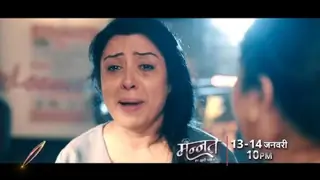The deteriorating content of Indian dance reality shows is leading to repetition and exhaustion of creativity.Iknoor Kaur speaks to choreographers and analyses the drift
Call it an emotional outburst, social interaction, exercise or non-verbal communication " dance has evolved from being a spiritual embodiment of expression and the cultural means of spreading a message to a commercial formula of entertainment. The ready example of that being our so called "dance reality shows" which don't seem to be all that real. We may have come a long way in our experiments with Western dance forms, but the Indian creative mind seems to have come to a standstill lately. The result of this is repetitive themes, lack of originality and ignorance of Indian dance forms.Boogie Woogie, touted as India's pioneering dance reality show, went on air in 1995 and laid the foundation for many others like Dance India Dance (DID), Just Dance, India's Got Talent, Dancing Queen, Chak Dhoom Dhoom, Jhalak Dikhhla Jaa (JDJ) and Nach Baliye which set the stage for the big leap. In the process of doing so, the Western effect seems to have rubbed onto us rather loudly. So much so that what could be a platform of celebrating popular Indian dance forms has become a mix of Latin, Hip hop and contemporary.
Where's the originality?
While So You Think You Can Dance led to Dance India Dance and America's Got Talent led to India's Got Talent, Dancing With the Stars led to Jhalak Dikhhla Jaa and Nach Baliye. However, though initially borrowed in concept, these shows have now started copying the dance acts of their original formats rather than creating their own.
Very few experimented with popular folk forms like Kalaripayattu, Chhau or Garba. In fact, fusion of Indian with contemporary found by our own home-grown practitioners like Aditi Mangaldas have no after-effects.
In February, we saw a couple suspended from a ring, performing acrobatic dance moves. Not very long ago we saw another couple on another show rise in the air on a pair of rings and perform the similar act supported by the prop. Call it a coincidence or sheer influence, but the dances also happened to be a part of the "family special" episodes on both the dance reality shows. Choreographer Tushar Kalia who supported Sana Saeed in the on-going season of Jhalak Dikhhla Jaa blames this on the over explosion of dance reality shows. "There are too many reality shows at the same time. While Nach Baliye was on, so were Dance India Dance and Jhalak. At the end of the day there are only a certain kinds of dances one can do. So it seems like there is nothing different," he said. However, that doesn't clarify the repetitive acts, similar choreographies, scarifying quality of dances and almost negligible experiments with Indian dance forms. Even India's Dancing Superstar (IDS)winning group MJ5 was nothing but a plagiarised-tagged-experimental dance group who took the famous Michael Jackson moonwalk and turned it into a synchronised break dance. We applauded them, but it was definitely not for their originality, but for how well they copied.
True version
While some choreographers make the channel a scapegoat, others blame it on the pressure for votes. Choreographer Shakti Pal, brother of IDS runners-up Akshay Pal says the reason is the lack of choreographers, "The channel is the governing authority. Both Star and Colors have BBC as their production house. So obviously the choreographers hired are usually the same. And when I say choreographers I also count assistant choreographers. So, if one choreographer is doing IDS, JDJ andNach Baliye there will be similarity."
Choreographer Cornell Rodrigues who was also the first runner up in Dance India Dance Doublesshared his opinion, "There are some choreographers who believe in shortcuts, but most of us are still original. A lot of us take YouTube references. Taking a reference is good because we get to increase our knowledge about dances. While we still sit and work through nights on innovative themes and steps, some choreographers feel it is easy to copy. But I feel today even the audience understands dance, it is difficult to fool them."
Salman Yusuf Khan, choreographer of Drashti Dhami on JDJ season 6, feels otherwise. He shared, "Every single dance reality show or dance-based film is inspired. It is very important to be inspired. If you see other shows, a lot of people are inspired by me too, but I can't say that those steps or that routine I did had my copyright. It is a dance and the basics of any dance will be the same. We look up to performers and create something new. At this point where there is a dance explosion all over the world, there will obviously be a certain similarity."
The wow' element
If you have been closely following the performances on the reality shows, you would have often wondered how much of the act is real dance. Lifts, aerial acts, rope swings and chair gymnastics have left the authentic essence of dance way behind. According to Shakti, the pressure from the channel for TRPs is a lot. "As a choreographer I love straight styles of dances, because I feel aerial acrobatics and lifts come into the gymnastics section. I feel it should not be there, but the channel people want it. So many times it has happened that a choreographer prepares a dance and it is changed at the last minute. Akshay's performance was also completely changed once. Choreographers do get upset about it, but what to do," he shared.
Cornell added, "The audience also likes to see complicated dances. According to Indians normal dancing becomes very simple. But when they see lifts and technical stuff they say, Wow! What was that?'" he said. Choreographer Sonali Kar who was Cornell's partner in DID Doubles, opined, "Normal dancing doesn't work today. People who have knowledge of dance feel there is no dancing and they are monkey tricks, but people who watch the show, don't have knowledge of dancing. They don't feel that dancing is being sacrificed. Even I try and keep it to dancing as much as I can, but even judges feel that something is missing. Some acts are completely aerial with no dance at all, but when the act is on people love it."
Tushar feels sometimes acts are added to hide the weaknesses of the dancer. "With lifts and aerial acts the difficulty level goes up but the non-dancers can easily perform them as there is less dance. It just makes the choreographer's job easy and also adds the wow' element," he explained.
An easy pick
Jazz, Rumba, Jive and Tango is exciting to watch, simply because it is new to the audience. This excitement has indeed led to the near extinction of traditional Indian dance forms on reality shows. Salman justified, "If the entire concept of the show is international, why not the dance? We have taken American shows and turned them into the Indian ones. When the whole concept of the show is American, the dances definitely tend to be more inclined towards that culture."
Salman was quick to defend his case on this too, "Indian dance is not easy to learn. Take any reality show and you will not see pure Bharatanatyam or Kathak. We have to mix it with Bollywood. If you show our audiences pure dance they won't like it. They want masala in everything. As choreographers we don't want to take that risk. At the end of the day we are all there to get votes. Honestly, even the Latin we do is in Bollywood style."
Tushar prefers to look at it in another way. "I believe that the sentiments of Indians are high. It is important to maintain the authenticity of our traditional forms which is not easy to learn in three days. People take years to master the dances. Latin American dances are easier to pick up," he summed up.



























